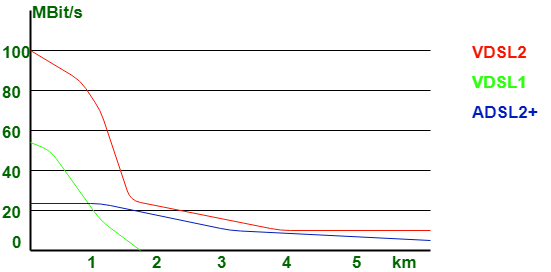Comparison between ADSL vs VDSL
Last Updated :
22 Feb, 2023
Prerequisite – Digital Subscriber Line (DSL)
ADSL stands for Asymmetric digital subscriber line, whereas VDSL stands for Very High Bitrate Digital Subscriber Line. They primarily disagree on the speed of information transmission or rate, wherever VDSL is considerably quicker than ADSL.

Comparison between ADSL vs VDSL:
Let’s see the difference between ADSL and VDSL:
| S.NO |
ADSL |
VDSL |
| 1. |
ADSL stands for Asymmetric digital subscriber line. |
VDSL stands for Very High Bitrate Digital Subscriber Line. |
| 2. |
It uses either a Carrier-less Amplitude Phase or Discrete Multitone Technique for modulation. |
While it uses Discrete Multitone Technique for modulation. |
| 3. |
It uses a Point-to-Point protocol rather than an Asynchronous Transmission Mode protocol. |
While it uses the Asynchronous Transmission Mode protocol. |
| 4. |
The coverage of ADSL is 18000 feet. |
While the coverage of VDSL is 4500 feet. |
| 5. |
The variation in the upstream rate of ADSL is from sixty-four Kbps to 1Mbps. |
Whereas the vary of upstream rate of VDSL is from 1.5 Mbps to 2.5 Mbps. |
| 6. |
The vary of downstream rate of ADSL is from five hundred Kbps to 8Mbps. |
While the varies the downstream rate of VDSL is from fifty Mbps to fifty-five Mbps. |
| 7. |
ADSL provides the data service and POTS service. |
It also provides the POTS service as well as a symmetric data service. |
| 8. |
A common protocol in ADSL is PPP(Public-Private Partnership). |
A common protocol in VDSL is ATM(Asynchronous Transfer Mode). |
Like Article
Suggest improvement
Share your thoughts in the comments
Please Login to comment...